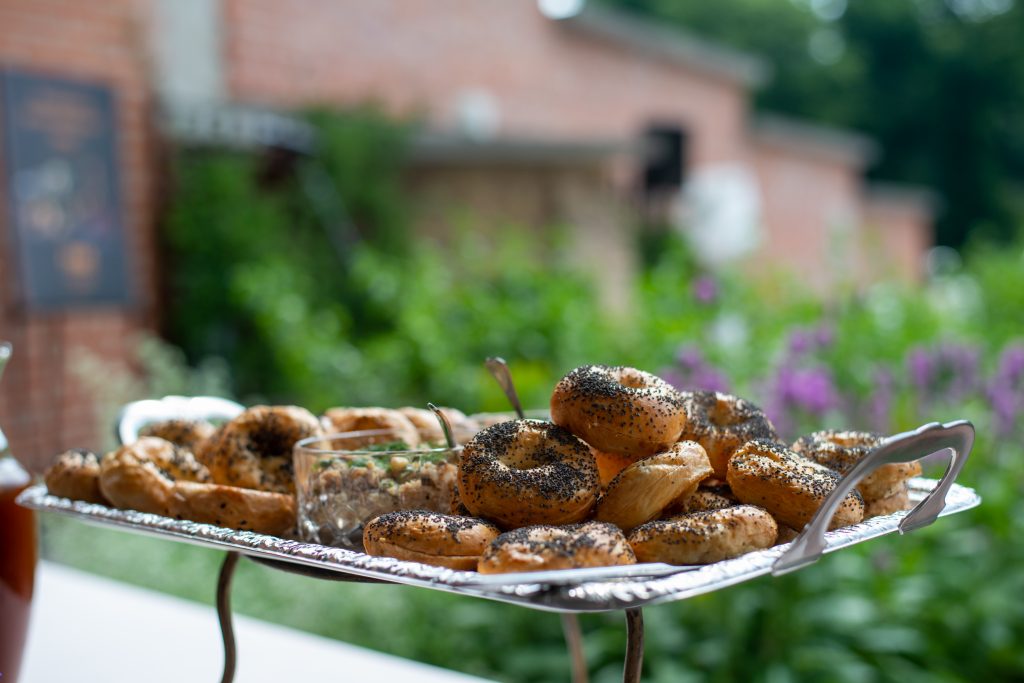The bagels that are now sold at the most fashionable cafés in the world have travelled a long gastronomic journey, which began in our region. Similar baked goods – the ancestors of the bagel – were first mentioned in the royal manor of Jogaila in 1394.

For a long time, bagel recipes were passed on by word of mouth, and the first recipe was published in Lithuanian by Liudvika Didžiulienė-Žmona in 1893. Only a skilled cook could make bagels according to this recipe, since the flour had to be measured by feel so that the end result was soft enough, but would also hold together. While some bagels were still boiling in the pot, you had to keep your eye on others in the oven, so the bagels always came out differently, depending on who was making them – it took a lot of experience to produce a batch where all the bagels were uniform, nicely shaped, and soft.
Senieji lietuviški receptai: Lietuvos gaspadinių receptai. Anželika Laužikienė, Rimvydas Laužikas, 2020. Vilnius University Publishing House
You will need:
- 1 L milk
- 2 kg wheat flour
- 1 tsp. salt
- 50 g fresh yeast, dissolved in water
- 4 eggs
- 50 g sugar
- 1 tbsp. butter
- 1 tbsp. sesame seed, black caraway seed or poppy seed
Method:
- Warm the milk to room temperature, stir in the salt, yeast, and part of the flour. The dough should be about the thickness of sour cream. Leave the dough to rise.
- When the dough rises, add the sugar, three eggs, and the melted (but not hot) butter; mix. Then add flour and knead. The dough should not stick to your hands. Divide the dough into pieces about the size of an apple and leave to rise a second time.
- When the dough rises, form one bagel from each piece, then place them all on a floured table and leave to rise for a little while more.
- Once they rise, drop the bagels one by one into boiling water. Remove them when they float to the top and put them on a greased pan, brush them with egg wash, sprinkle them with the seeds, and put them in an oven preheated to 220°C for 15-20 minutes, or until nicely browned.
